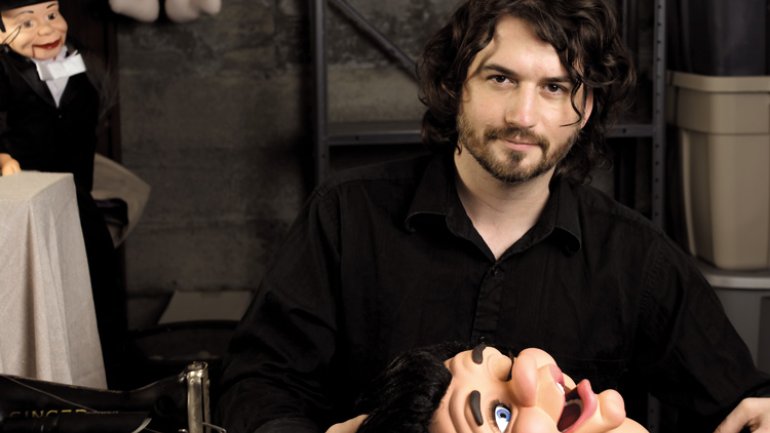Talking Heads
Talking Heads
Self-taught puppet maker Keith Lovik specializes in a figure linked to a nostalgic form of entertainment-the ventriloquist dummy. Shannon Sharpe interviews him about his path to this unusual craft.
When Keith Lovik was 19 years old, he took over his father's Seattle-based puppet-making business. It wasn't something the untrained maker planned. His father abandoned the family, also leaving behind his angry and frustrated business partner. The partner soon left as well. Lovik was quickly informed he needed to fulfill the outstanding orders. Realizing it was sink or swim, Lovik, who is now 35, began teaching himself the craft, the first step being to take apart and then refurbish the puppets to understand how they are built-literally learning the trade from the outside in. "Nothing that I'd done in my life was artistic," Lovik says. "But I appreciate that I was never taught anything. I think I've improved greatly on the puppets both artistically and mechanically by deconstructing them."
Lovik's father, a teacher who originally began making puppets as a way to communicate with his students, had made a wide range of figures, from elaborate sock versions to puppets in a can to ventriloquist dummies. These dummies are now Lovik's focus, and his business—Lovik’s Puppets—has since become a supplier to amateur and many professional ventriloquists, such as Terry Fator, a Las Vegas headliner and a winner on America’s Got Talent.
With their heads made of basswood or a rigid form of latex, Lovik’s dummies offer an assortment of features ventriloquists might desire—wiggling ears, winking and blinking eyes, even a spitting mouth. The dummies, which are custom-made, are constructed to be either 35-inch starter figures or full-size professional figures. Clients choose all physical aspects of their dummy, such as eye, hair and skin color. Lovik begins the process by forming a head out of plasticine, an oil-based clay, pouring plaster around the head to create a mold and then pouring latex into the mold. This is what would be used for a latex head. For a wood head, the next step is “tracing” and carving from a master head to a block of basswood with a wood-carving machine called a duplicator. Lovik then attaches the head to a wooden post with movement levers and inserts it into a hollow body fashioned from wood, fabric and leather. "It's definitely an odd art form," he remarks.
Working by himself has helped Lovik learn how to do anything and everything. "I've given up trying to train people," he says. "I've gone through seven apprentices. I'd love to make 40 figures a week like my dad did, but it comes down to the guilt I'd feel knowing [the workers] wouldn't make any money for a year." Over the 16 years he's been at it, Lovik has experienced ups and downs. "Five years ago the business was dead." he notes. "A lot of people closed up shop-which was better for me! Now there's a younger generation coming in. Parents are buying dummies for their children's entertainment. A lot of teachers use them as a communication tool as well."
Lovik has also met some interesting characters (to say the least) along the way. "There's definitely some crazy people in this business," he says, laughing as he tells the story of one customer who would call and only speak to Lovik through his dummy. "It took me a little while to figure out why his voice always sounded odd," he says, noting that this is just one of many tales he could tell. "I think a lot of people use their dummies as a way to communicate what they are afraid to say."
The expertise he has acquired as well as his flexible schedule allows Lovik to pursue another love - music. "I always had the desire to be a professional musician," he says. "Puppet-making is a casual form of art for me. There's no massive pressure. That's the wonder of this business. I'm able to pursue what I really love while still doing something I love."
As a sole proprietor who works alone in his studio, Lovik finds that music - playing guitar with a band - also provides a social outlet, as does bartending at a local pub. "This allows me to be around people," Lovik says. "When I catch myself talking to myself, I know it's time to pick up some extra shifts at the bar."

